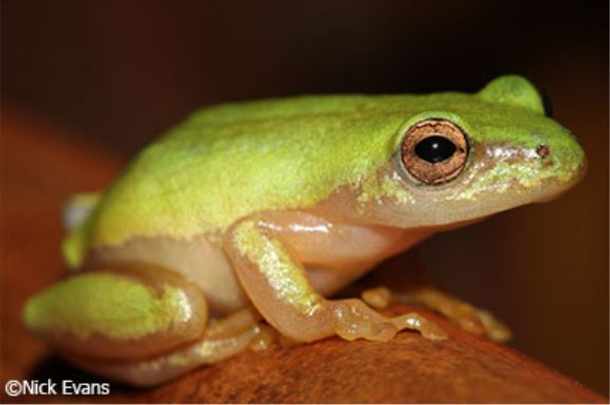A team of Australian scientists have recently discovered a previously unrecorded species of tree frog in the lowland rainforests of New Guinea, the world’s second-largest island, situated northeast of mainland Australia.
With cartoonish eyes, an ear-to-ear grin, oversized padded feet and milk-chocolate hued skin, there is no question as to why the Litoria mira was nicknamed the “Chocolate Frog”
“The closest known relative of Litoria mira is the Australian green tree frog. The two species look similar except one is usually green, while the new species usually has a lovely chocolate colouring,” said Paul Oliver of the Centre for Planetary Health and Food Security and Queensland Museum, who described the discovery in a co-authored paper in the journal the Australian Journal of Zoology.
Read the latest Simply Green digital magazine below
Australia and New Guinea were once linked by a land bridge around 10 000 years ago, the bridge was slowly eroded and enveloped by rising sea levels. The prehistoric linkage resulted in Australia and New Guinea sharing many of the same species of animals which have evolved along separate lines due to the island becoming isolated from the mainland.
Researcher and paper co-author Steve Richards from the South Australian Museum Richards said that “because the frog lives in very hot, swampy areas with lots of crocodiles, all these things discourage exploration.”
Frogs and other amphibians play a critical role in sustaining healthy habitats. They are also a key indicator species meaning that the numbers and health of a particular species of frog can indicate the health of the overall ecosystem.
Frogs eat pests such as mosquitoes and have helped control the spread of malaria in areas around South Africa and the world.
Closer to home, the Johannesburg Zoo’s Amphibian Conservation Project in collaboration with Ezemvelo KwaZulu- Natal Wildlife and the Endangered Wildlife Trust released 50 endangered Pickersgill’s Reed Frogs in November 2020. The 50 frogs formed part of a total of 400 hundred which was released into the Buffelsdraai Reforestation Project Site.

Ian du Plessis, curator of amphibians at the zoo said in a statement that “We started with reproducing non-endangered species of frogs and then jumped into partnership with Ezemvelo KZN Wildlife to collect Pickersgill’s reed frogs which were only found in 25 sites in KZN due to habitat loss.”
Dr Errol Douwes, senior manager for the Restoration Ecology Branch under the eThekwini Municipality’s Environmental Planning and Climate Protection Department, said “the more biodiversity you have, the better the environment functions and subsequently provides its services. Wetlands are good for storing water and contribute to a great quality of water which has major benefits including in agriculture.
“But for them to be fully functional, we need to have all the pieces of the puzzle functioning together and that is the role that the Pickersgill’s Reed frogs will play.”
According to the South African National Biodiversity Institute, the Pickersgill’s Reed Frog is listed as critically endangered due to habitat loss, climate change and competition for food from other wetland species.
SANBI further states that Hyperolius pickersgilli is endemic to a narrow strip of land along the coast of KwaZulu-Natal. Extensive surveying over many years by Tarrant & Armstrong (2013) found that there are small populations of the species which occur in 22 isolated sites from Sezela on the South Coast to St Lucia in the north.
Out of a total distribution range of 2 303 km², the frogs have only been found to occupy a total land surface area of 9 km². If this tiny area of the frog’s habitat is not protected, the Pickersgill’s Reed Frog will most likely go extinct in the wild.
If you live near the KwaZulu-Natal coast, you can encourage amphibians into your backyard by building a small pond and allowing natural wetland vegetation to grow.
You could also form patrol groups with friends and neighbour’s to monitor your local waterways and river systems for pollution and wildlife populations. The protection of our natural resources is as much our responsibility as it is governments. Do your part.
Credit IOL